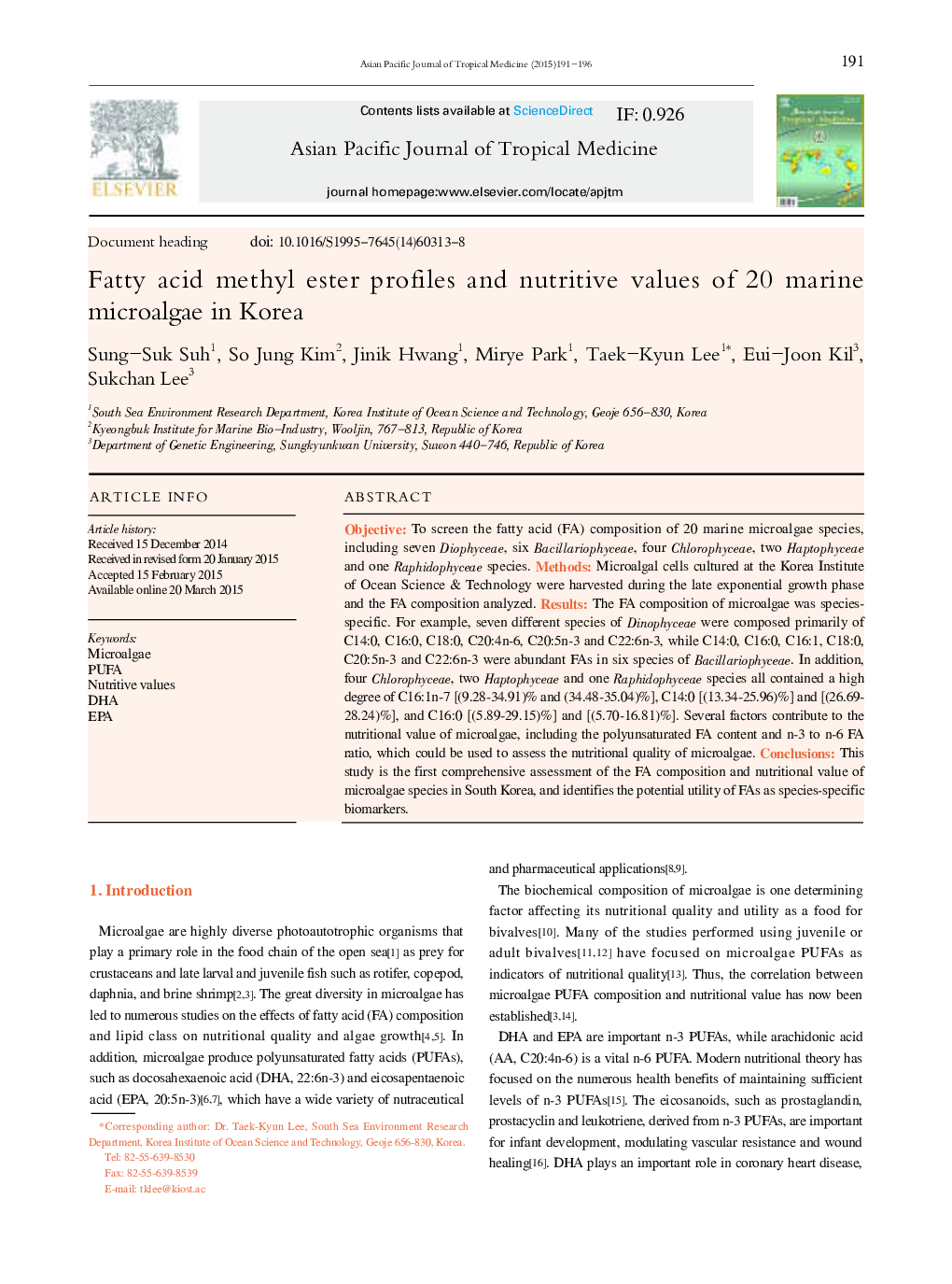| Article ID | Journal | Published Year | Pages | File Type |
|---|---|---|---|---|
| 3455522 | Asian Pacific Journal of Tropical Medicine | 2015 | 6 Pages |
ObjectiveTo screen the fatty acid (FA) composition of 20 marine microalgae species, including seven Diophyceae, six Bacillariophyceae, four Chlorophyceae, two Haptophyceae and one Raphidophyceae species.MethodsMicroalgal cells cultured at the Korea Institute of Ocean Science & Technology were harvested during the late exponential growth phase and the FA composition analyzed.ResultsThe FA composition of microalgae was species–specific. For example, seven different species of Dinophyceae were composed primarily of C14:0, C16:0, C18:0, C20:4n–6, C20:5n–3 and C22:6n–3, while C14:0, C16:0, C16:1, C18:0, C20:5n–3 and C22:6n–3 were abundant FAs in six species of Bacillariophyceae. In addition, four Chlorophyceae, two Haptophyceae and one Raphidophyceae species all contained a high degree of C16:1n–7 [(9.28–34.91)% and (34.48–35.04)%], C14:0 [(13.34–25.96)%] and [(26.69–28.24)%], and C16:0 [(5.89–29.15)%] and [(5.70–16.81)%]. Several factors contribute to the nutritional value of microalgae, including the polyunsaturated FA content and n–3 to n–6 FA ratio, which could be used to assess the nutritional quality of microalgae.ConclusionsThis study is the first comprehensive assessment of the FA composition and nutritional value of microalgae species in South Korea, and identifies the potential utility of FAs as species–specific biomarkers.
